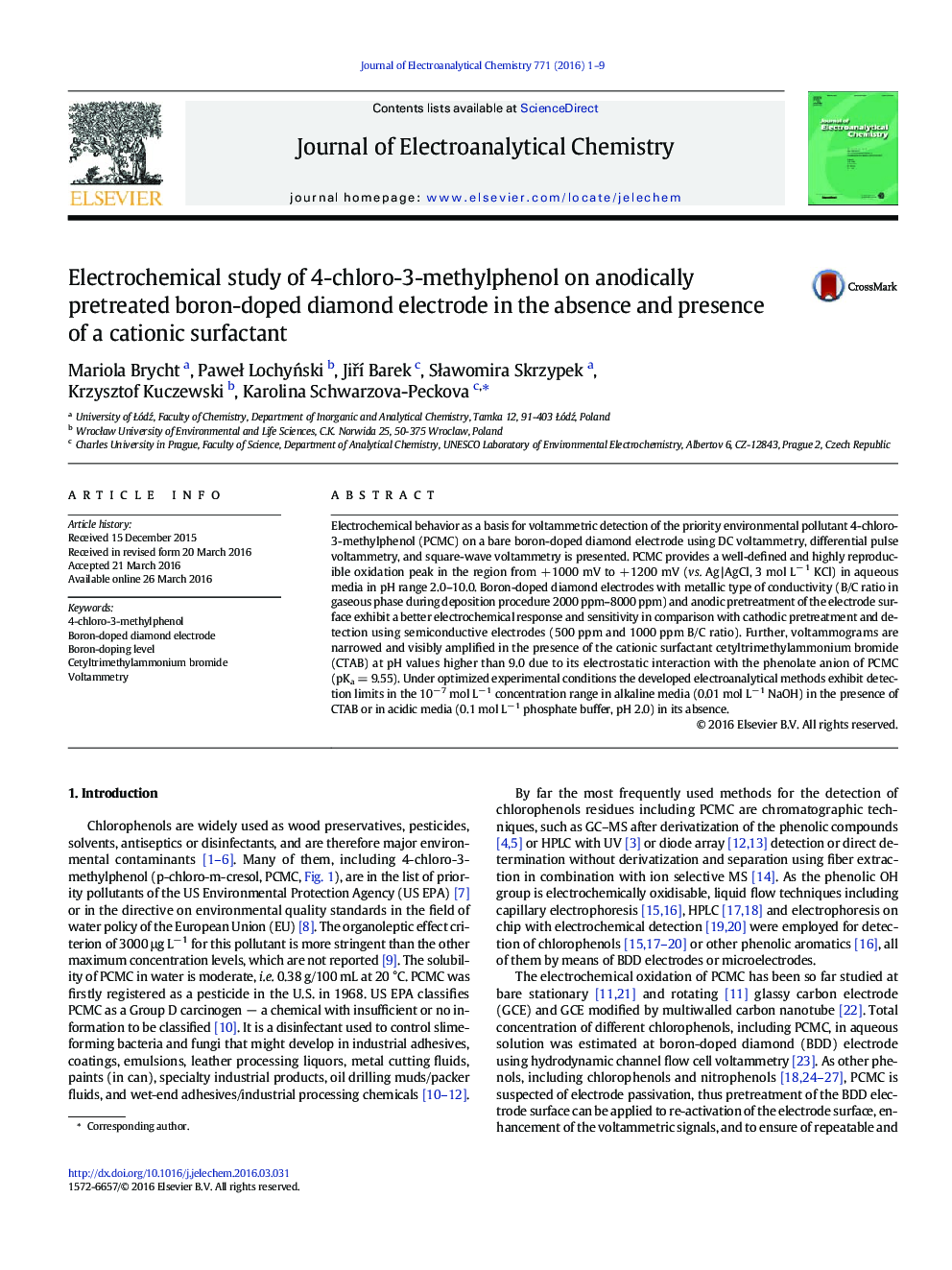| Article ID | Journal | Published Year | Pages | File Type |
|---|---|---|---|---|
| 217899 | Journal of Electroanalytical Chemistry | 2016 | 9 Pages |
Abstract
Electrochemical behavior as a basis for voltammetric detection of the priority environmental pollutant 4-chloro-3-methylphenol (PCMC) on a bare boron-doped diamond electrode using DC voltammetry, differential pulse voltammetry, and square-wave voltammetry is presented. PCMC provides a well-defined and highly reproducible oxidation peak in the region from + 1000 mV to + 1200 mV (vs. Ag | AgCl, 3 mol Lâ 1 KCl) in aqueous media in pH range 2.0-10.0. Boron-doped diamond electrodes with metallic type of conductivity (B/C ratio in gaseous phase during deposition procedure 2000 ppm-8000 ppm) and anodic pretreatment of the electrode surface exhibit a better electrochemical response and sensitivity in comparison with cathodic pretreatment and detection using semiconductive electrodes (500 ppm and 1000 ppm B/C ratio). Further, voltammograms are narrowed and visibly amplified in the presence of the cationic surfactant cetyltrimethylammonium bromide (CTAB) at pH values higher than 9.0 due to its electrostatic interaction with the phenolate anion of PCMC (pKa = 9.55). Under optimized experimental conditions the developed electroanalytical methods exhibit detection limits in the 10â 7 mol Lâ 1 concentration range in alkaline media (0.01 mol Lâ 1 NaOH) in the presence of CTAB or in acidic media (0.1 mol Lâ 1 phosphate buffer, pH 2.0) in its absence.
Keywords
Related Topics
Physical Sciences and Engineering
Chemical Engineering
Chemical Engineering (General)
Authors
Mariola Brycht, PaweÅ LochyÅski, JiÅÃ Barek, SÅawomira Skrzypek, Krzysztof Kuczewski, Karolina Schwarzova-Peckova,
